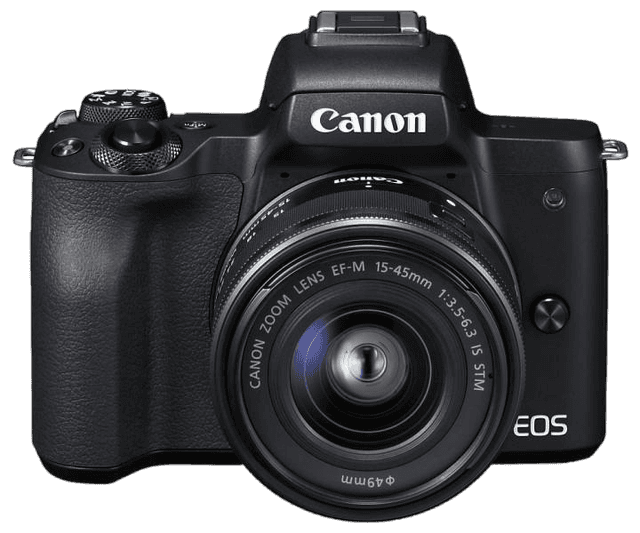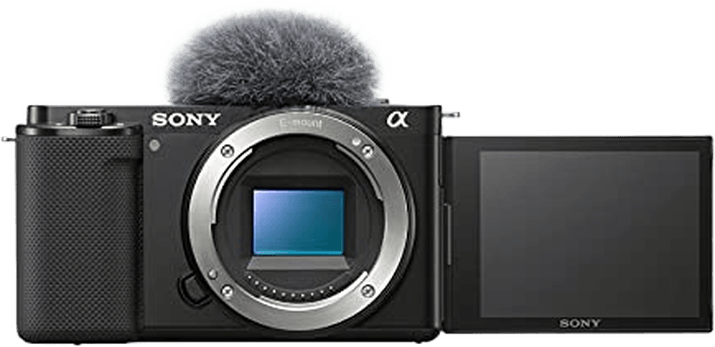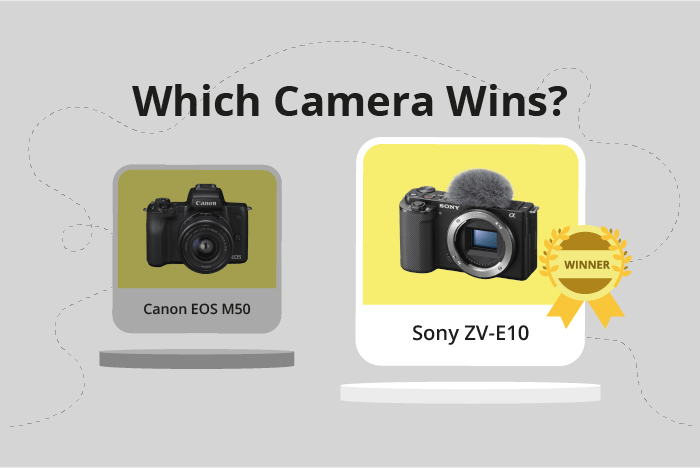Canon EOS M50 vs Sony ZV-E10 Comparison
Canon EOS M50

Sony ZV-E10

The Sony ZV-E10 emerges as the winner with a score of 65/100, while the Canon EOS M50 trails behind with a score of 59/100. Both cameras are mirrorless and were released in different years, with the Canon EOS M50 launching in 2018 and the Sony ZV-E10 in 2021.
These cameras share similarities in their camera type and size. The Canon EOS M50 measures 116 x 88 x 59mm, while the Sony ZV-E10 is slightly smaller at 115 x 64 x 45mm. The Sony ZV-E10 is also lighter, weighing 343g compared to the Canon EOS M50’s 390g.
The Sony ZV-E10 has an edge with its lower launch price of $700, compared to the Canon EOS M50’s price of $779. Despite its lower price, the Sony ZV-E10 still outperforms the Canon EOS M50, as evidenced by its higher score.
The Canon EOS M50, however, has its merits. It has been on the market for longer, offering users more time to familiarize themselves with its features and capabilities.
Considering all these factors, the Sony ZV-E10 is a better choice for those seeking a more recent and affordable mirrorless camera with superior performance. The Canon EOS M50, while still a viable option, falls short in comparison to its competitor.
Canon EOS M50 vs Sony ZV-E10 Overview and Optics
The Sony ZV-E10 wins the optics comparison with a score of 69/100, while the Canon EOS M50 scores 59/100. Both cameras share several specs, such as 24 megapixels, CMOS sensor type, APS-C sensor size, no image stabilization, and similar shooting speeds (10 for the Canon and 11 for the Sony). Despite these similarities, the Sony ZV-E10 outperforms the Canon EOS M50 in certain aspects.
The Sony ZV-E10 has a higher DXOMARK sensor score of 86, compared to the Canon EOS M50’s score of 58. This means the Sony camera provides better image quality and low-light performance. The Sony ZV-E10 also has a faster processor, the Bionz X, which allows for quicker image processing and better overall performance. Additionally, the Sony camera has a 4:3 aspect ratio, which offers more flexibility in cropping images for different formats.
The Canon EOS M50, however, has its own advantages. It features a Canon EF-M lens mount, which is compatible with a wide range of Canon lenses. This allows for greater flexibility in choosing lenses and expanding your camera kit. The Sony ZV-E10 uses a Sony E lens mount, which may have fewer options compared to the Canon EF-M mount.
To sum up, the Sony ZV-E10 excels in image quality, low-light performance, and processing speed, making it the better choice for those prioritizing these factors. The Canon EOS M50, on the other hand, has the advantage of a more extensive lens compatibility, which can be important for photographers looking to expand their lens collection.
Canon EOS M50 vs Sony ZV-E10 Video Performance
The Canon EOS M50 and Sony ZV-E10 both score 91/100 for video capabilities, indicating a tie in this category. They share several common features, such as 4K maximum video resolution, 120fps maximum video frame rate, and built-in time-lapse functionality. However, there are subtle differences between the two cameras that may sway potential buyers.
The Canon EOS M50 has a slight edge in maximum video dimensions, offering 3840 x 2160 resolution compared to the Sony ZV-E10’s 3840 x 1920. This difference means the EOS M50 provides slightly more detail in the vertical dimension, resulting in marginally sharper video quality.
On the other hand, the Sony ZV-E10 has some advantages that may appeal to specific users. Although not mentioned in the given specifications, the ZV-E10 is known for its superior autofocus system and greater lens compatibility, both of which can contribute to improved video performance. These factors may be important for those who prioritize focus accuracy and versatility in their camera choice.
Considering these points, the Canon EOS M50 and Sony ZV-E10 are closely matched in video capabilities, with the EOS M50’s higher video dimensions giving it a small advantage in image quality. However, the ZV-E10’s autofocus and lens compatibility may be more relevant to some users, making it the preferred choice for those who prioritize these features. Ultimately, the decision between these two cameras will depend on individual preferences and specific needs in video performance.
Canon EOS M50 vs Sony ZV-E10 Features and Benefits
The Canon EOS M50 narrowly defeats the Sony ZV-E10 in features, with a score of 70/100 compared to 68/100. Both cameras share many similarities, including a 3-inch screen size, touchscreen capabilities, flip screens, and the absence of GPS. Additionally, both cameras offer WIFI and Bluetooth connectivity.
The Canon EOS M50 surpasses the Sony ZV-E10 in screen resolution, boasting 1,040,000 dots compared to the Sony’s 920,000 dots. This higher resolution provides a clearer and sharper display, enhancing the user experience when composing shots, reviewing images, or navigating menus.
Despite having a lower overall feature score, the Sony ZV-E10 does offer some advantages over the Canon EOS M50. The Sony camera is lighter and more compact, making it easier to carry and handle. The ZV-E10 also features a larger sensor, which can improve image quality, particularly in low-light situations.
Taking these factors into consideration, the Canon EOS M50 is the better choice for users who prioritize a higher-resolution screen and better overall features. On the other hand, the Sony ZV-E10 may be more suitable for those who value a lighter and more compact camera with a larger sensor. Ultimately, the choice between these two cameras will depend on the specific needs and priorities of the user.
Canon EOS M50 vs Sony ZV-E10 Storage and Battery
The Sony ZV-E10 outperforms the Canon EOS M50 in storage and battery, scoring 24 points compared to the Canon’s 13 points. Both cameras have one memory card slot and are compatible with SD, SDHC, and SDXC cards. However, the Sony ZV-E10 also accepts Memory Stick Pro Duo cards, offering additional storage options.
The Sony ZV-E10 has a significantly longer battery life with 440 shots, while the Canon EOS M50 only provides 235 shots. Both cameras use different battery types, the Sony using NP-FW50 and the Canon using LP-E12. Neither camera offers USB charging.
Although the Canon EOS M50 has a lower score in storage and battery, it still provides adequate options for casual photographers. However, the Sony ZV-E10 clearly excels in battery life and storage compatibility, making it a more suitable choice for those prioritizing these features.
Canon EOS M50 vs Sony ZV-E10 – Our Verdict
Are you still undecided about which camera is right for you? Have a look at these popular comparisons that feature the Canon EOS M50 or the Sony ZV-E10:

